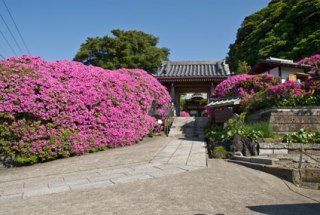We live in the Evergreen State and we are blessed with an enormous variety of plants that retain their foliage 12 months a year. These plants we call evergreens fall into two categories. One we call “conifers” which technically refers to the “cone bearing” habit of a plant but practically speaking means they most of them have needle-like foliage. The common tendency is to refer to all conifers as ‘pines’ which of course drives all of us in the industry absolutely up the wall. The truth is that there are pines, spruces, hemlocks, cedars, cypresses, junipers, firs and several other lesser known flavors of conifers.
The other type of evergreen is what we call a “broad leafed” evergreen. These are shrubs such as rhododendrons, azaleas, camellias, hollies, laurels, and a host of others as well. Rather than needle-like foliage, these have leaves that are broad and sometimes quite wide, at least relative to a conifer. And what conifers and broad leaves have in common is that they are a constant in the garden. These plants are the work horses of the yard. They are totally reliable, they are dependable and they are predictable. However, they can also be boring as hell.
Deciduous plants on the other hand are anything but boring. They are constantly changing from season to season. In the spring they often start out with a flush of blooms followed by fairly non-descript foliage through out the summer. As the days shorten and become cooler they once again transform themselves into a blaze of color, only this time it is the foliage rather than the blooms. But here is the real kicker. In the winter, with their foliage gone, silhouetted against the grey skies, they actually become the accents of the garden. The winter, rather than the spring or summer, is the season when deciduous plants really reach their stride. And this is why we all need some deciduous plants in our gardens. Their bark, buds and branching patterns all add texture and interest. I have several examples to prove this theory.
The first one that comes to mind is my weeping “Purple Fountain Beech.” While Mr. Beech is a prominent player all summer long, it is the winter when he takes center stage. As I sit in my hot tub in the early morning hours and gaze upon this statuesque specimen I can’t help but admire his stature in my garden. The central leader zigzags upward with all the lateral branches arching out and down toward the ground. The very tip seems to have lost its sense of direction but I know that in spring it will somehow re-find it and grow another 6-12 inches taller. I find the whole process enchanting.
Another example is a contorted larch called Diane that I have planted in a container. The needles of a larch are a soft green and tend to just disappear into the landscape. But when the needles finally all fall off suddenly you have a plant that becomes the focal point of your garden. My Diane is positioned on one of the steps of my deck and this time of year, with the sun low in the sky, its kinky and contorted branching habit becomes a total point of interest. Up to this point it was almost invisible. Not any more.
Climbing hydrangeas are another case in point. This is a vine that has attractive enough foliage and relatively showy white flowers in late spring. The fall color is a bright yellow as well. But once the leaves all fall off you have this wonderful and intriguing matrix of branches that are reminiscent of a nest of snakes. If nothing else, it is a conversation piece.
There are many other examples in my garden. The Staghorn Sumac, after loosing its leaves appears to resemble the fuzzy antlers of a herd of bucks. The Contorted Filbert looks its best after the foliage has dropped and exposed the artistic branching patterns. I have a 12-foot-tall Hydrangea aspera that retains it old flowers all winter long and sports peeling bark as well. And speaking of peeling bark, I used to have a wonderful paper bark maple until it contracted Verticillium wilt and died. But when alive it was a great winter standout.
Call them sticks, twigs or whatever you want. The point to remember is that in the winter season when the skies are dark and grey and all the evergreens just make the garden even more oppressive, deciduous plants add some visual interest. And while that is reason enough to incorporate them into our yards, some of them also bloom in the winter, but I will save that tidbit of information for next week.



